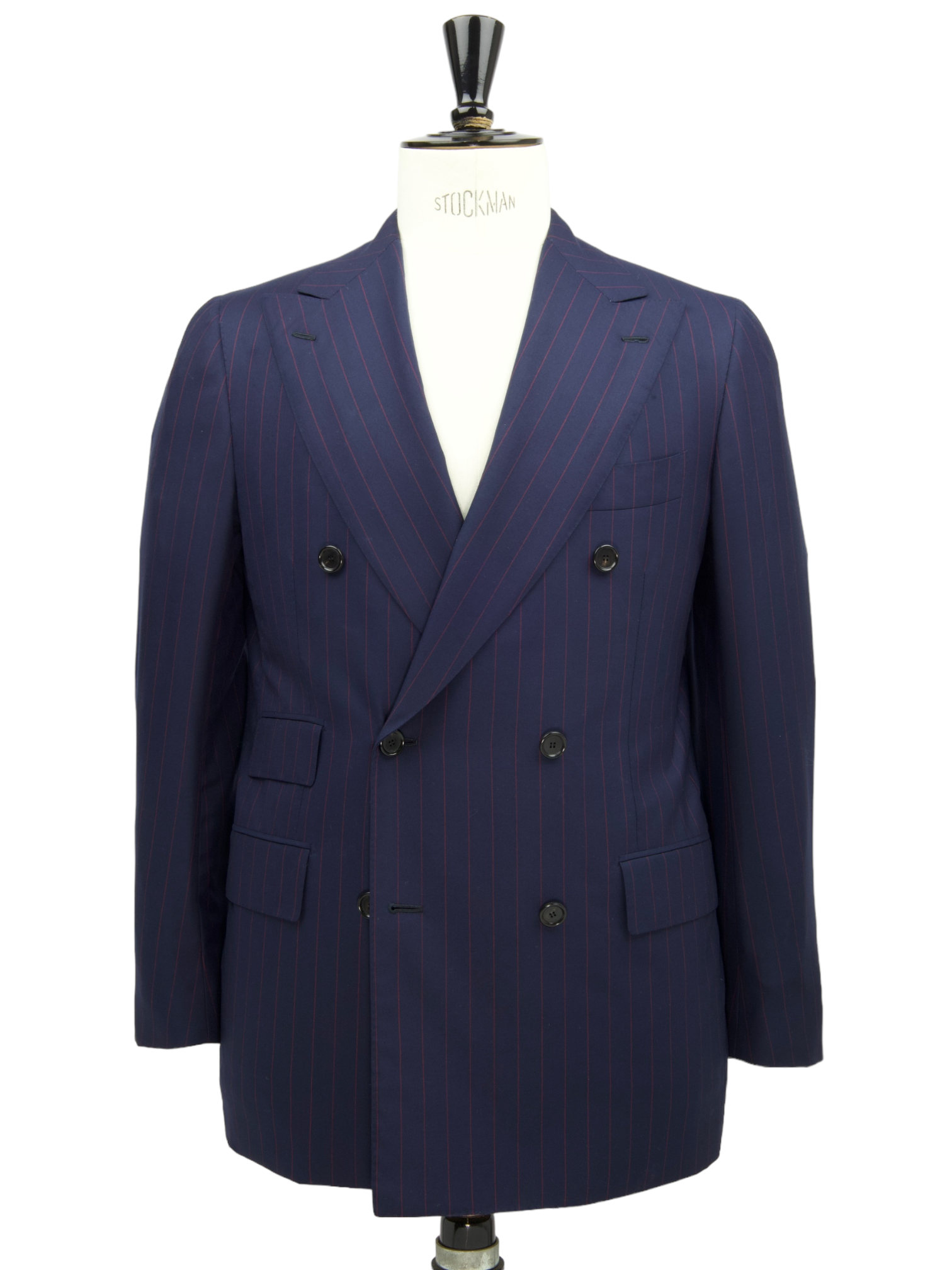
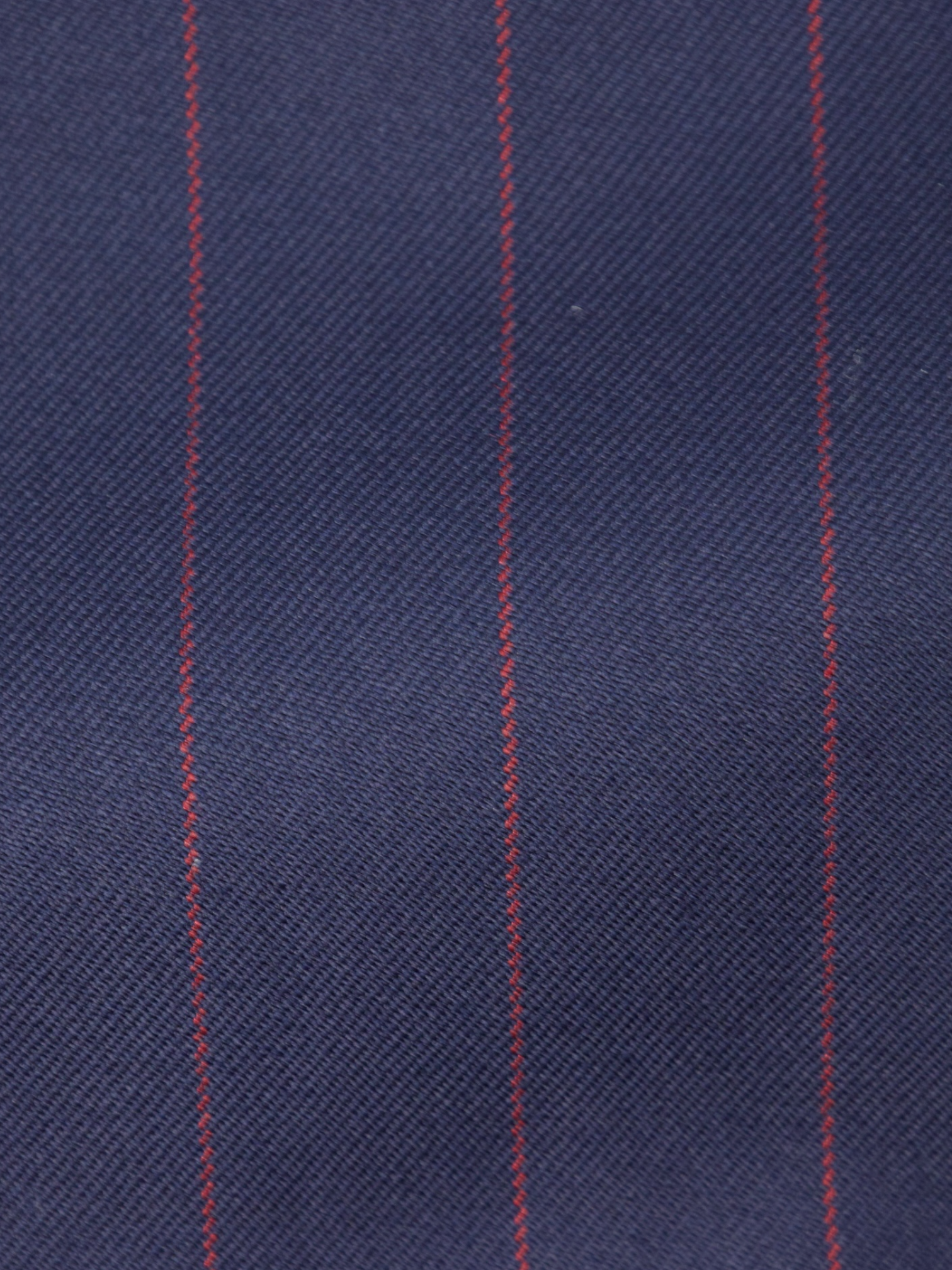
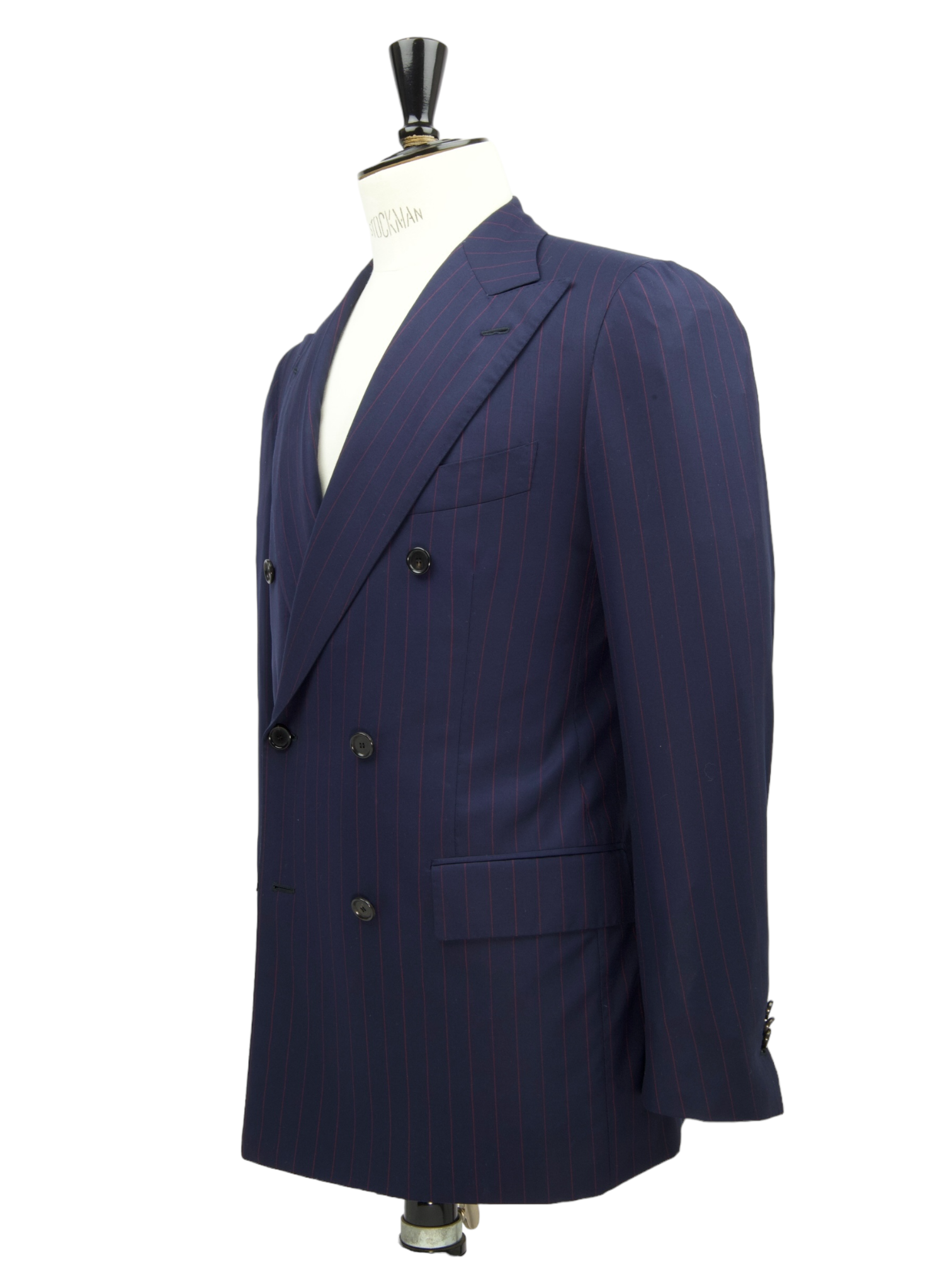
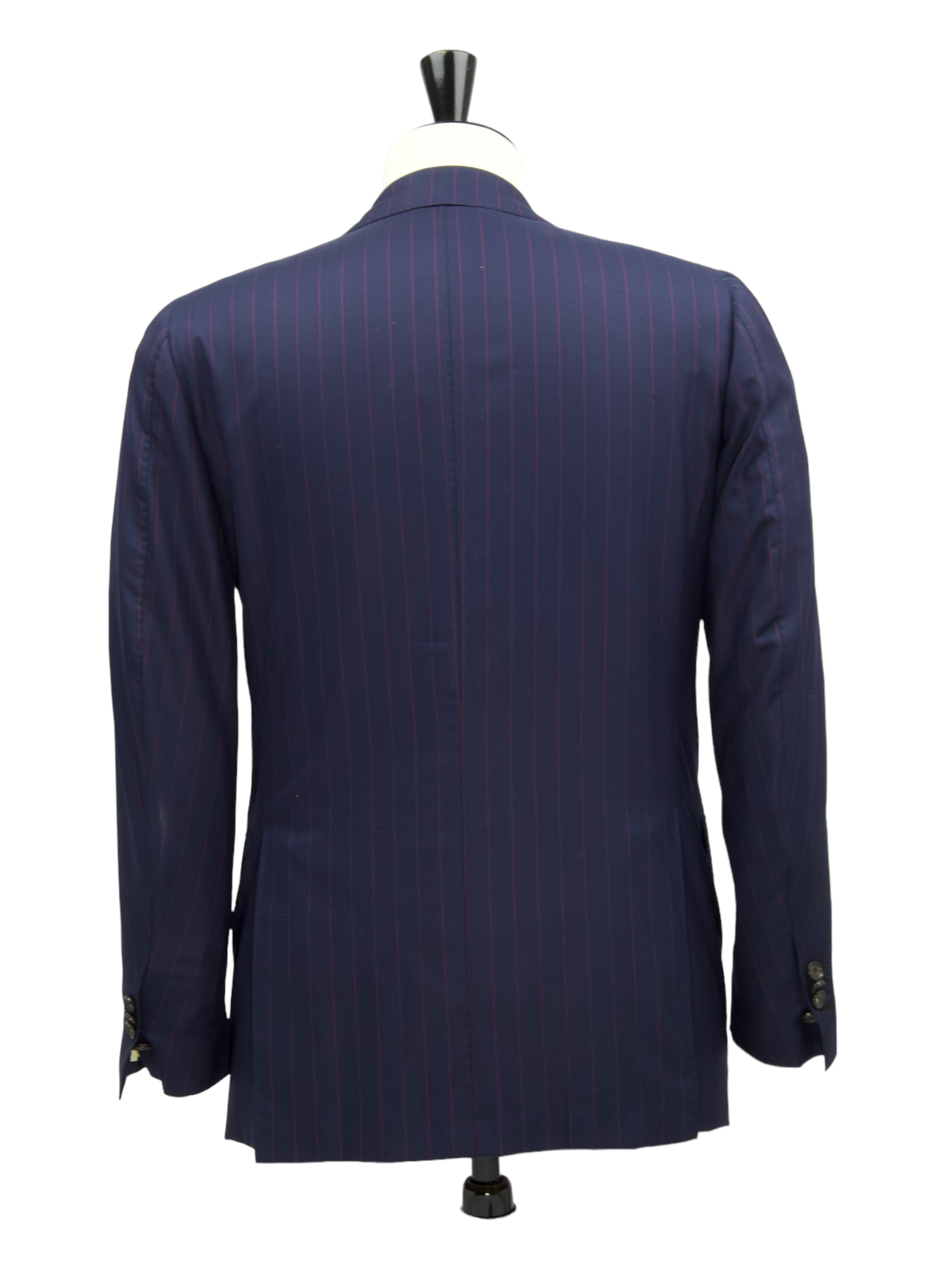
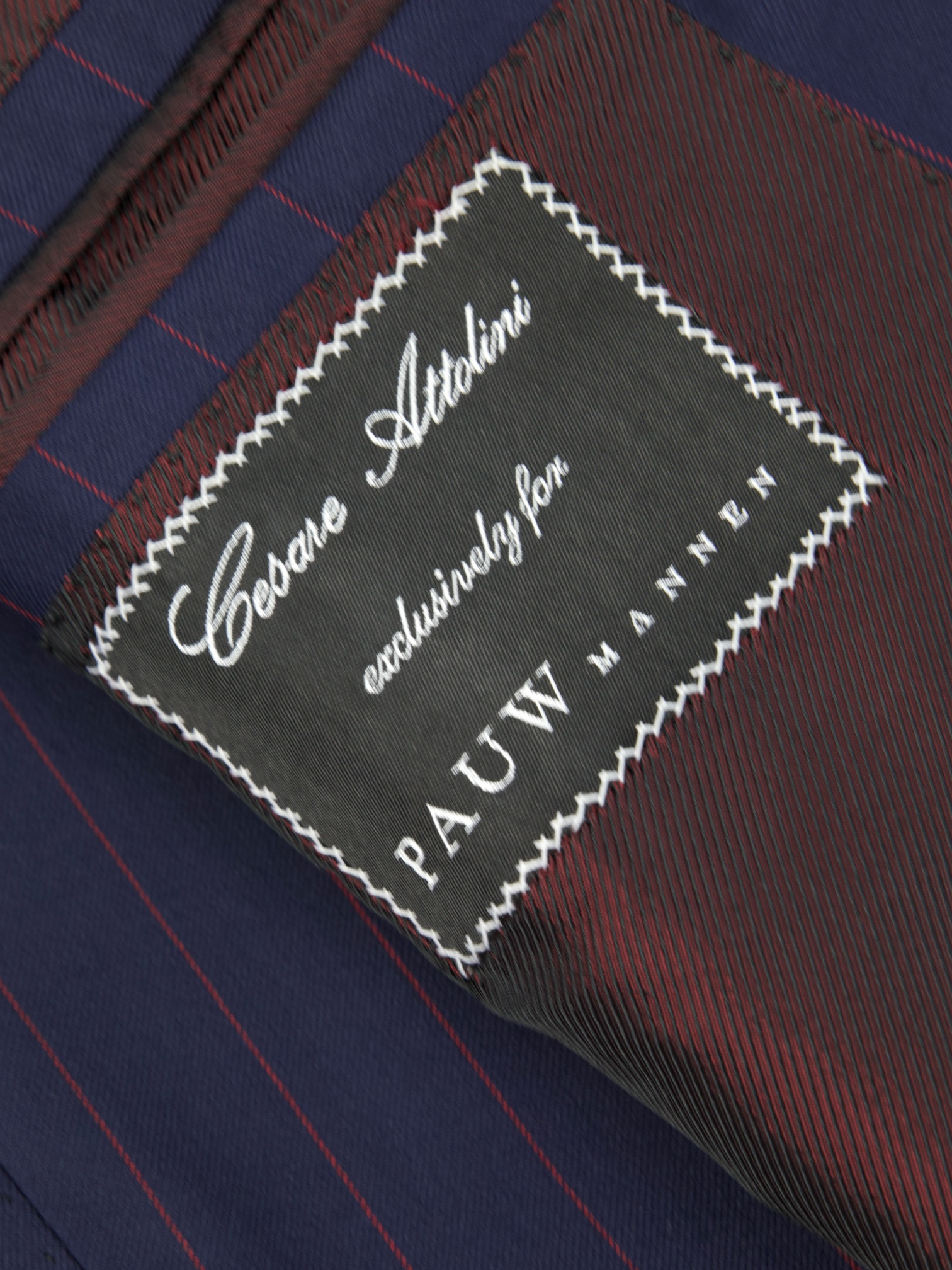
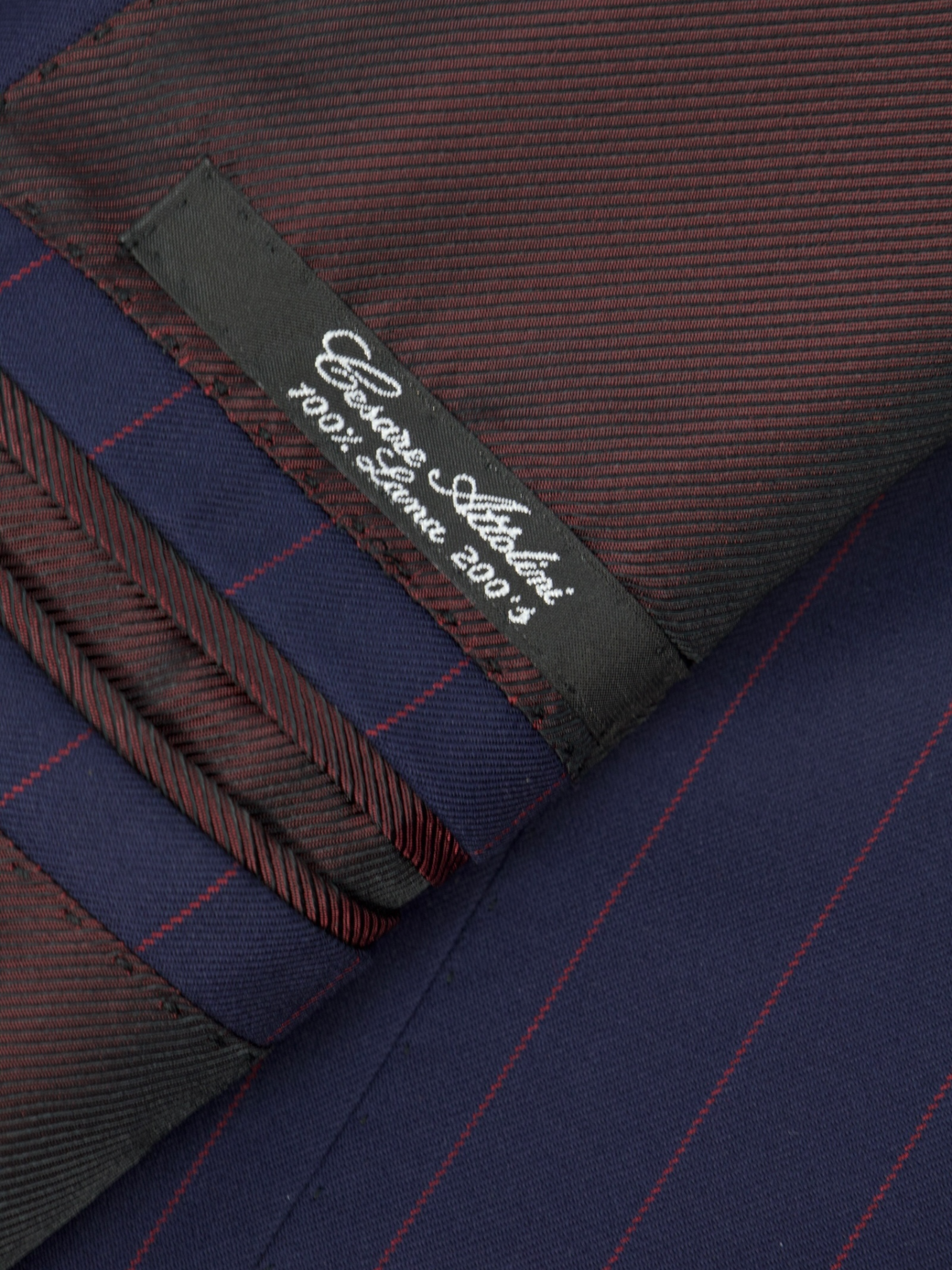
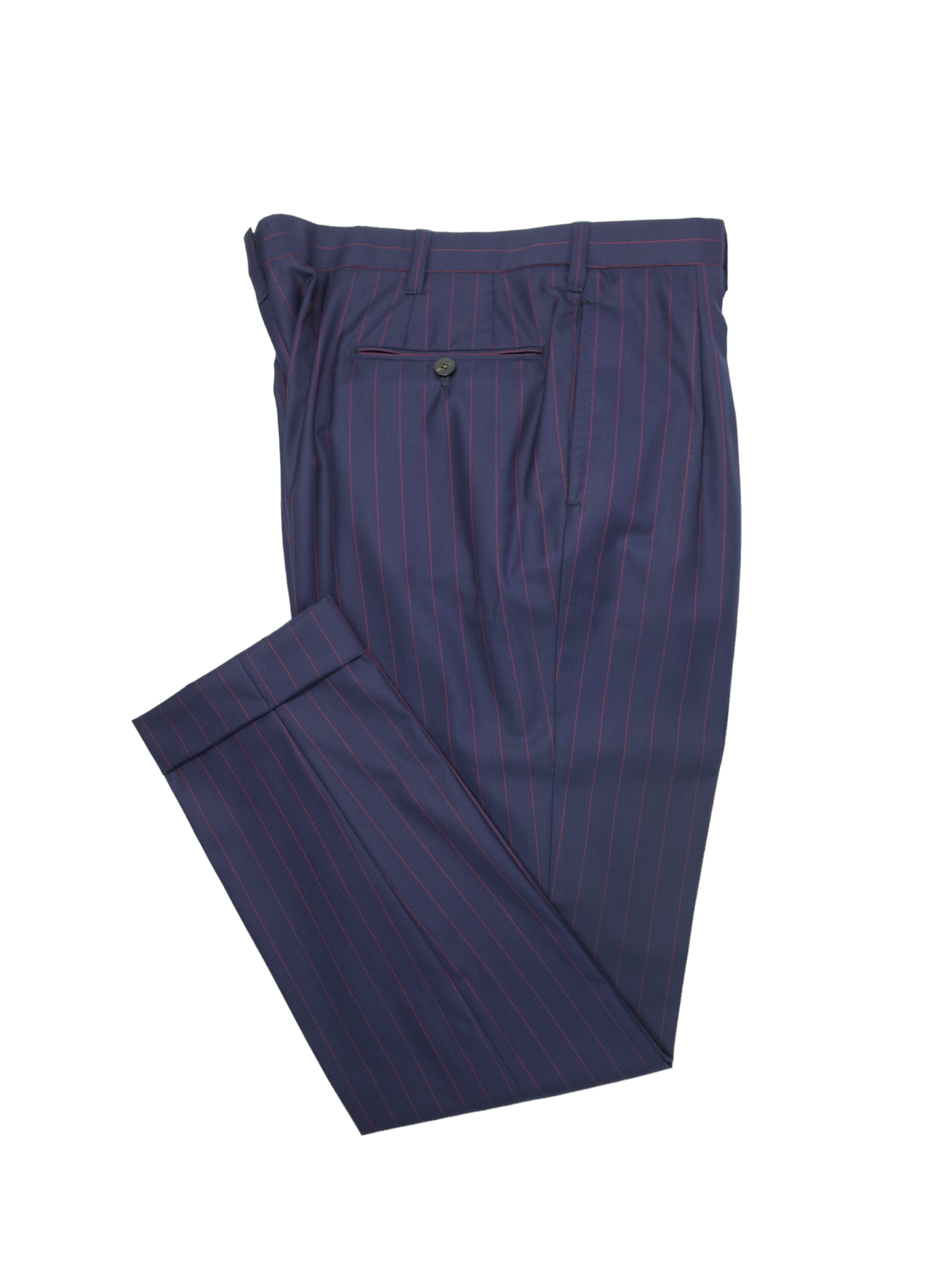
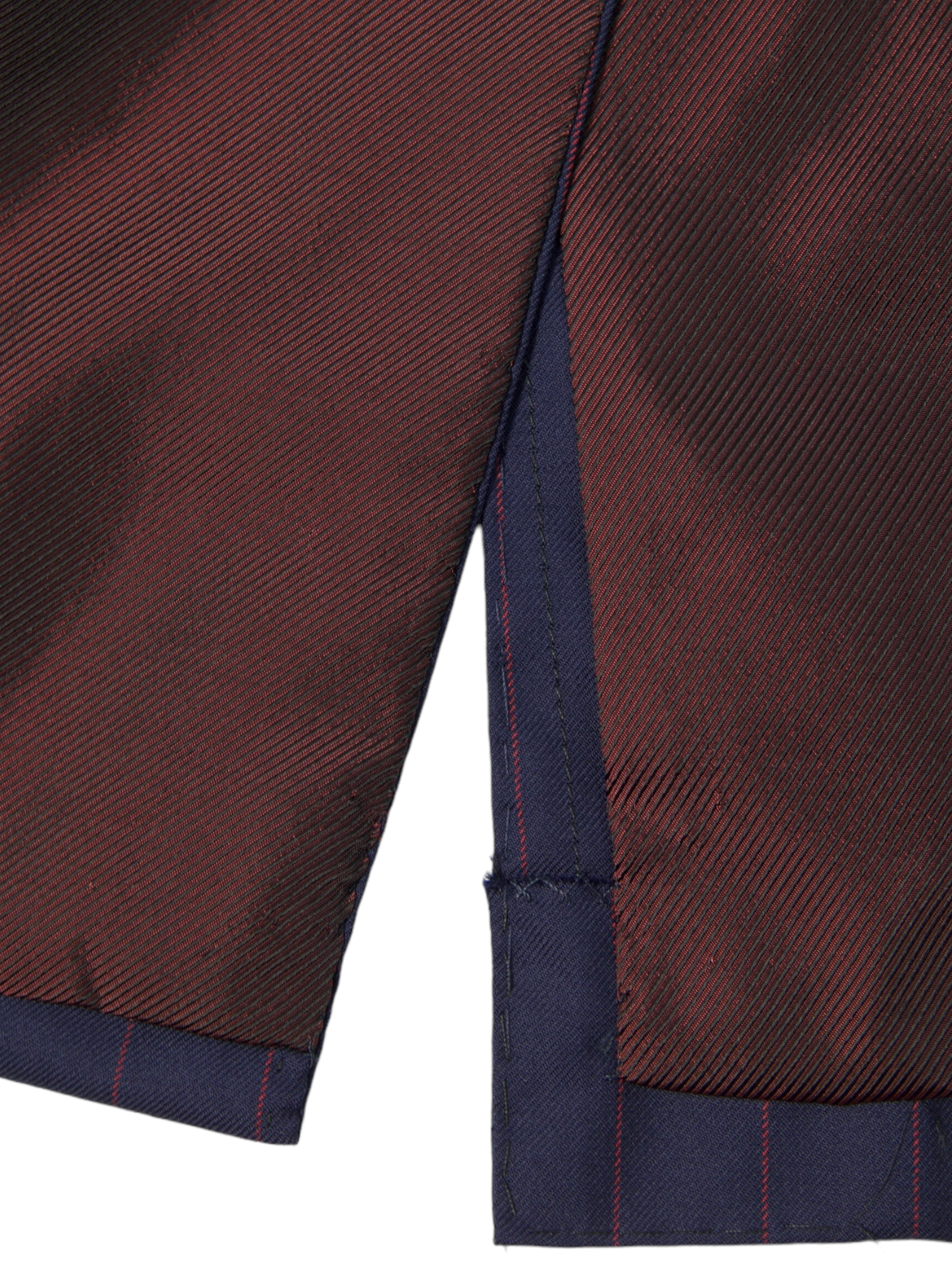
Cesare Attolini Blue & Red Double Breasted Super 200's Pinstripe Suit
46 IT / 36 US / Small
Discover the Cesare Attolini Blue & Red Double Breasted Super 200's Pinstripe Suit, a striking example of luxury tailoring. This suit is crafted from Super 200's wool, offering an incredibly fine and soft texture that drapes beautifully. The blue fabric is highlighted by red pinstripes, adding a bold yet sophisticated flair.
This double-breasted suit is meticulously handcrafted in Cesare Attolini’s Casalnuovo workshop, reflecting the brand’s commitment to excellence. With broad peak lapels, a double-breasted closure, and a structured silhouette, this suit is ideal for formal events and high-profile business settings. The attention to detail, from the hand-finished stitching to the perfect fit, is a hallmark of Cesare Attolini's sartorial craftsmanship. Discover the elaborated sartorial details below.
Composition: 100% Super 200's Wool
Color: Blue
Pattern: Pinstripe
See how we measure our sartorial items
Discover the customization possibilities by visiting our tailor alteration guide
Shipping
- Complimentary shipping on orders over €200 (Netherlands), €500 (EU), and €1,000 (rest of world).
- Orders under these amounts: shipping rates depend on your country.
- Customs duties or import fees may apply and are the customer’s responsibility. The courier may charge additional fees.
Returns
- You have the right to return your order within 14 days of delivery.
- If you wish to return an item, please notify us within 48 hours of receiving your order.
- Return shipping is at the customer’s expense.
- A 10% restocking fee will be deducted from your refund for all returns.
Please carefully review all measurements and quality control notes in the listing before purchasing. Return shipments have an environmental and economic impact. For any questions or if you need help, feel free to contact us before placing your order.
General Note: While we inspect each item to ensure its quality, please note that minor imperfections may be present due to the preloved nature of the garments. We strive to represent every item accurately, but subtle signs of wear may sometimes go unnoticed. We appreciate your understanding and commitment to sustainable luxury.
Choose options








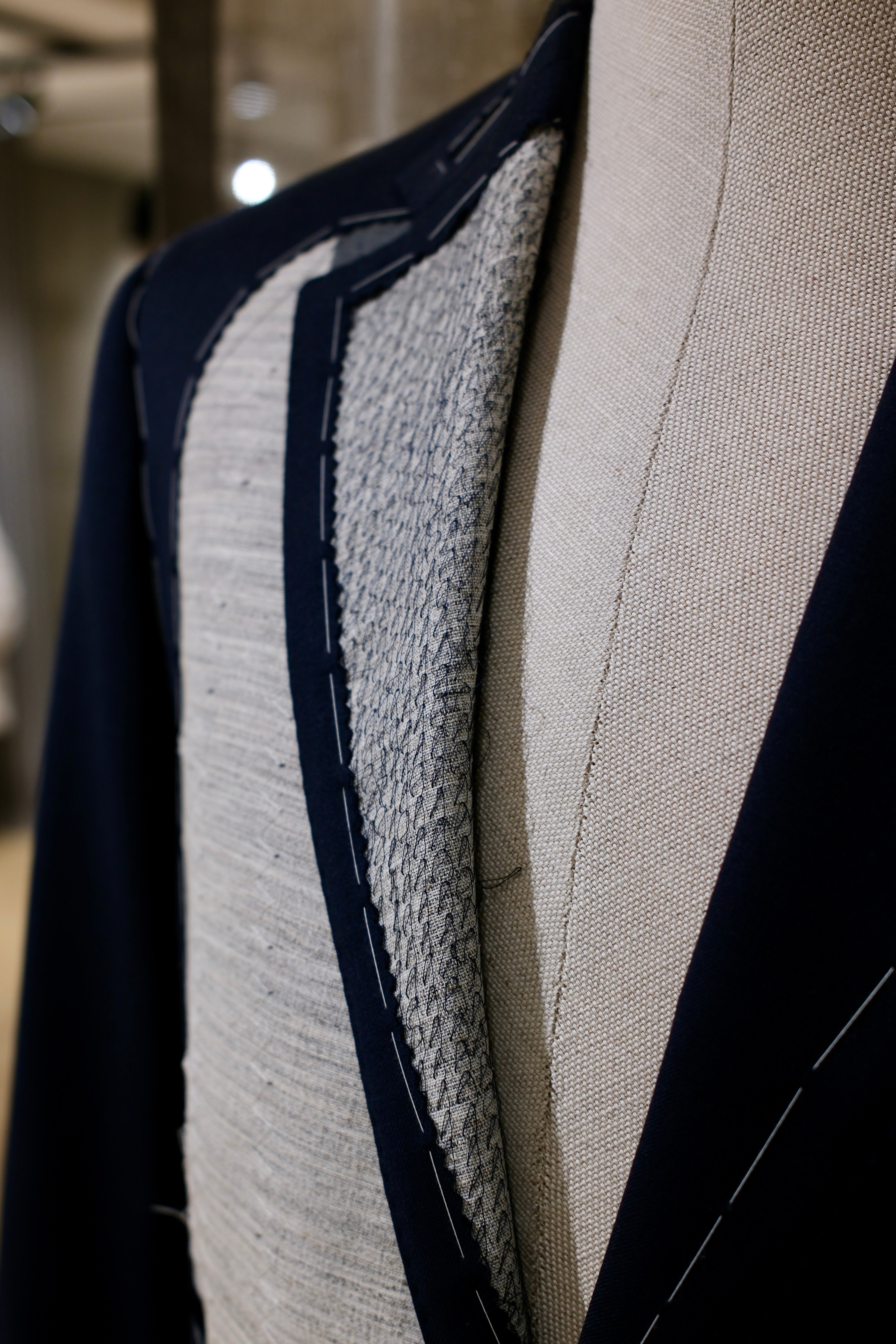
Discover the
Sartorial Details

Full Canvas Construction
A sartorial jacket - or coat - needs an interlining that will help give it shape and mold it. Canvas gives the item a tailored and crafted look. In short, it breathes life into it. Purely technical, canvas is made from either horsehair, wool, mohair or camel hair. It could also be a mix of them all, with varying thickness and weight. The canvas is stitched to the jacket, often by hand, thus making the canvas pieces 'floating' in the middle of the inner and outer cloth. This gives the jacket added flexibility. The canvas runs from the upper parts, all the way down to the end of the jacket. After you wear your canvassed suit for a while, it will begin to take your shape and look incredibly natural.
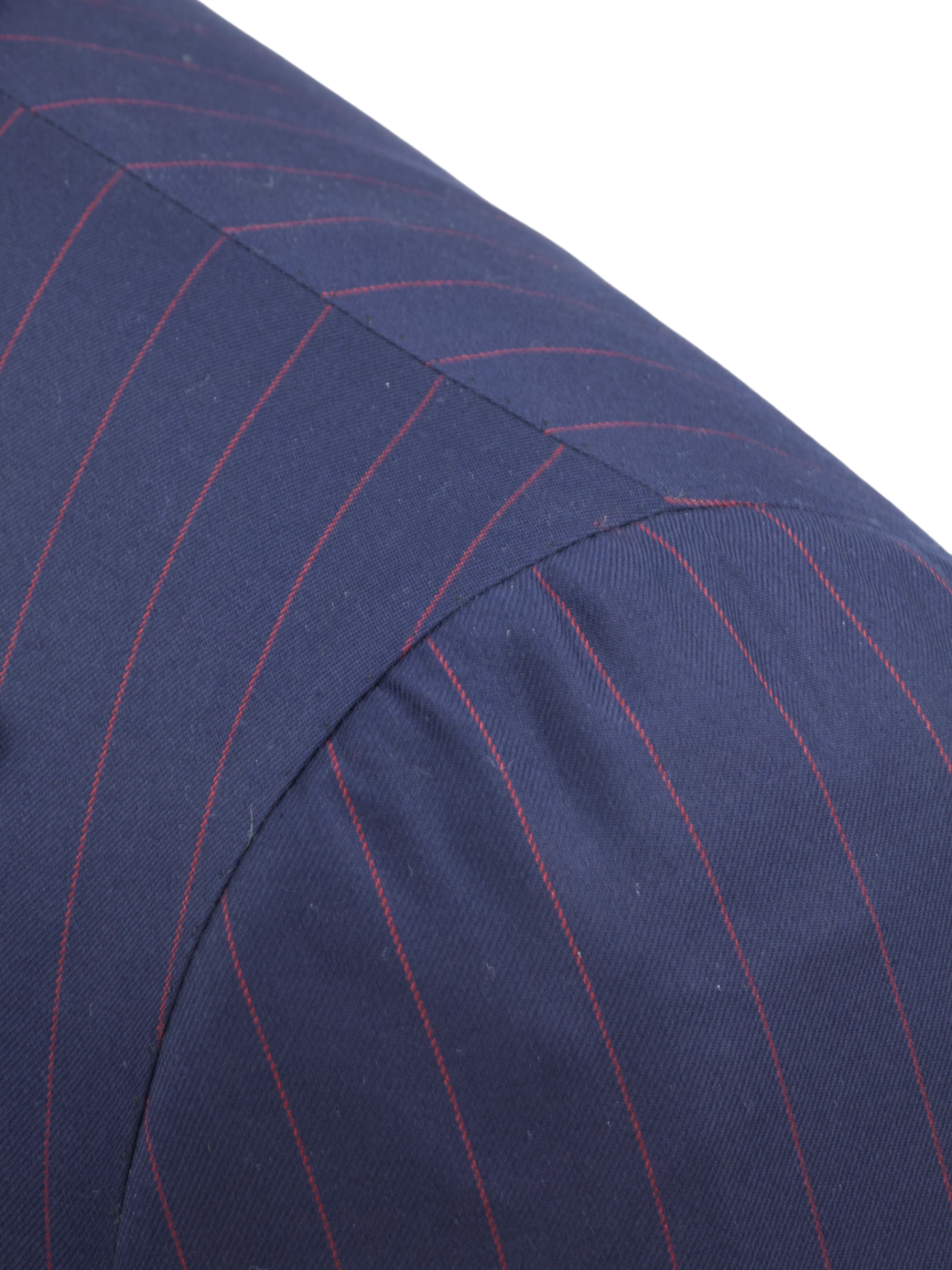
La Spalla Camicia
Spalla Camicia roughly translates to 'shirt sleeve' in Italian and is a shoulder style created and popularized by Neapolitan tailors. The name 'shirt sleeve' was so coined due to the characteristic shirring found at the sleeve's head where the fullness of the larger sleeve collapses. Rather than having the head of the sleeve turned back and stitched inside, the head is lapped under and stitched along the top.
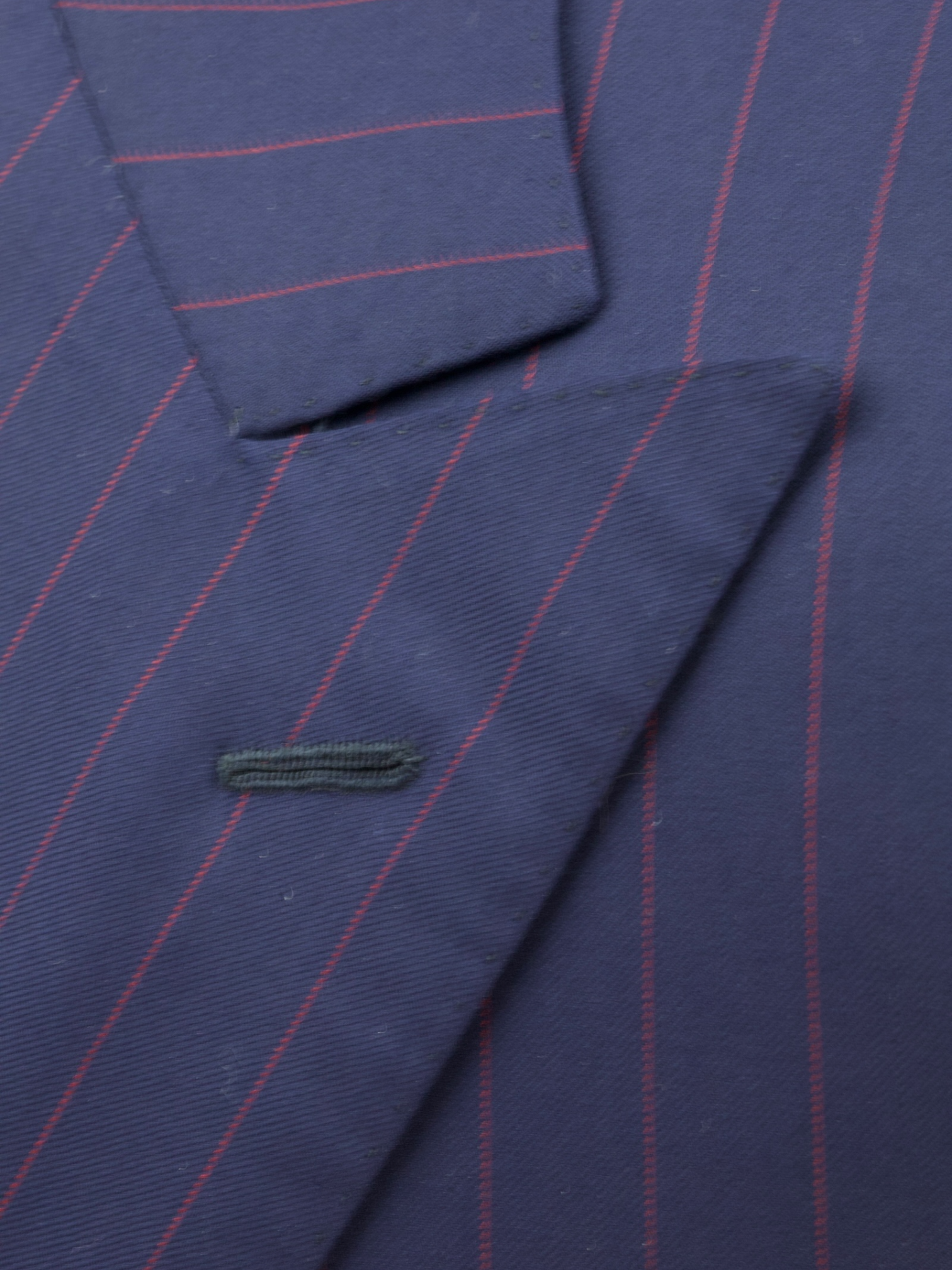
Handmade Buttonhole
Handmade buttonholes are made using a chain of knotted loops called purl stitches that make them strong and visually distinctive. It takes about five seconds to sew a regular buttonhole with a machine – a single handmade buttonhole takes about 10 minutes to sew.
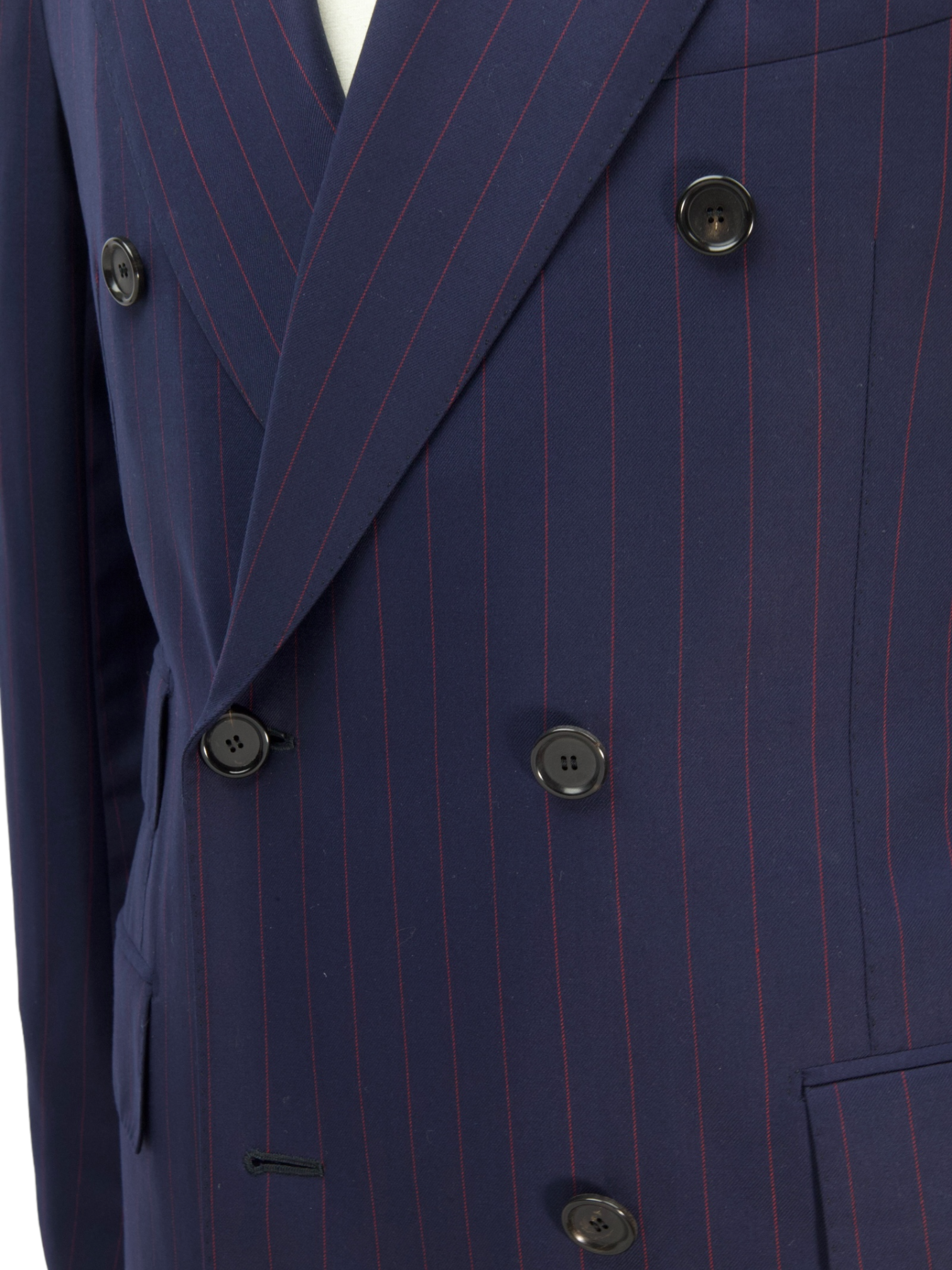
Neapolitan Double Breasted Closure
There are many types of double-breasted jackets, though the most popular is the 6×2 button configuration – six buttons in two rows. The rule of thumb is that only one button should be closed and leaving the other one alone. Most commonly the middle button is closed and the lower button remains open. That being said, a Neapolitan double breasted jacket is cut in a way both the middle or lower button can be closed. Then again, button the lower button and leave the middle one alone. One feature of the double-breasted jacket that many may not pay attention to, is the presence of an inner button that isn’t seen. This button should be closed at all times as it helps to keep the jacket laying on the body.
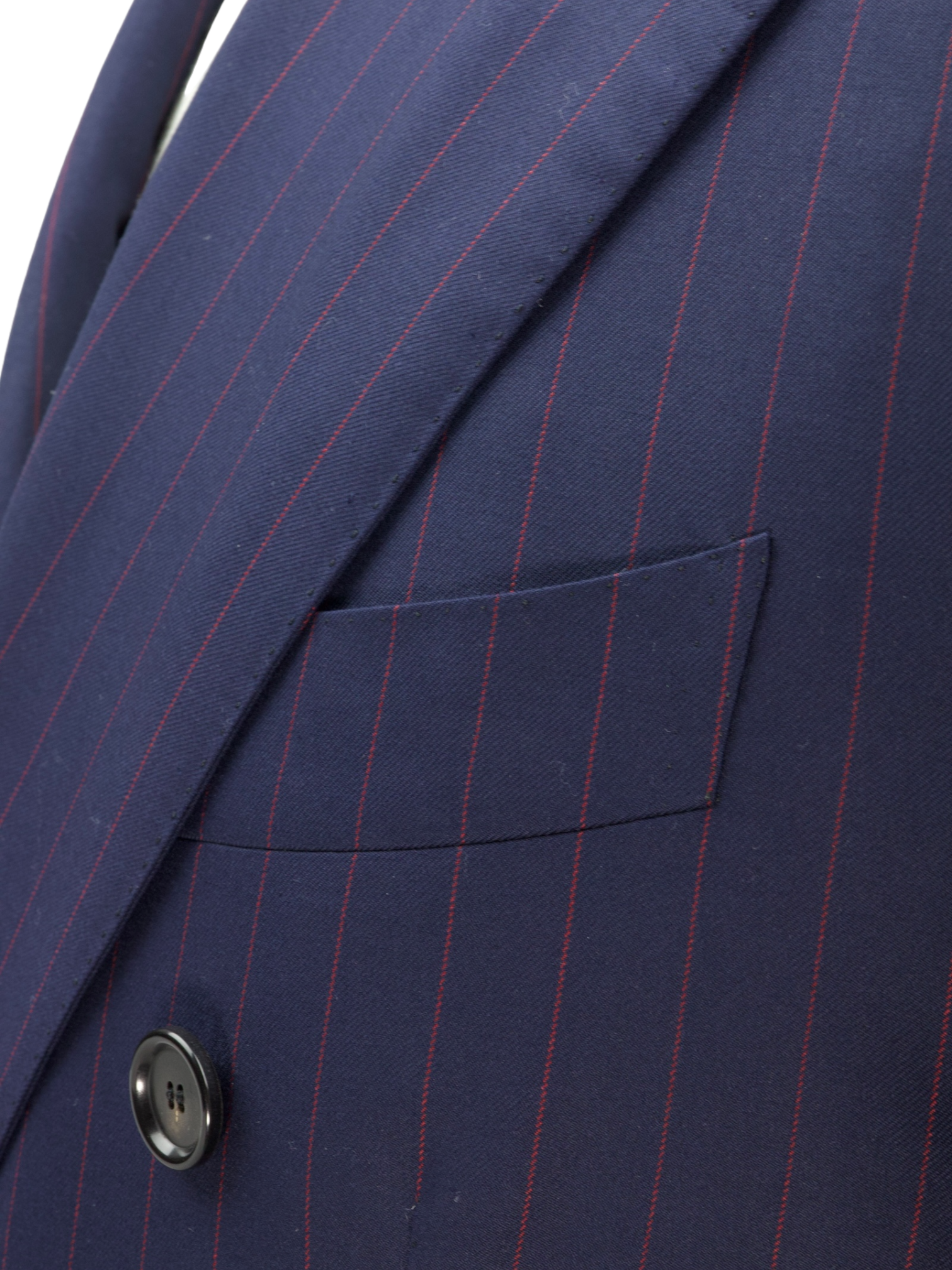
Barchetta Chest Pocket
The barchetta pocket is often thought to be a tailoring detail exclusively from Italy. The word “barchetta” is Italian for “little boat.” It describes how the pocket floats on the chest, gently angled upwards, like the bow of a sailboat.
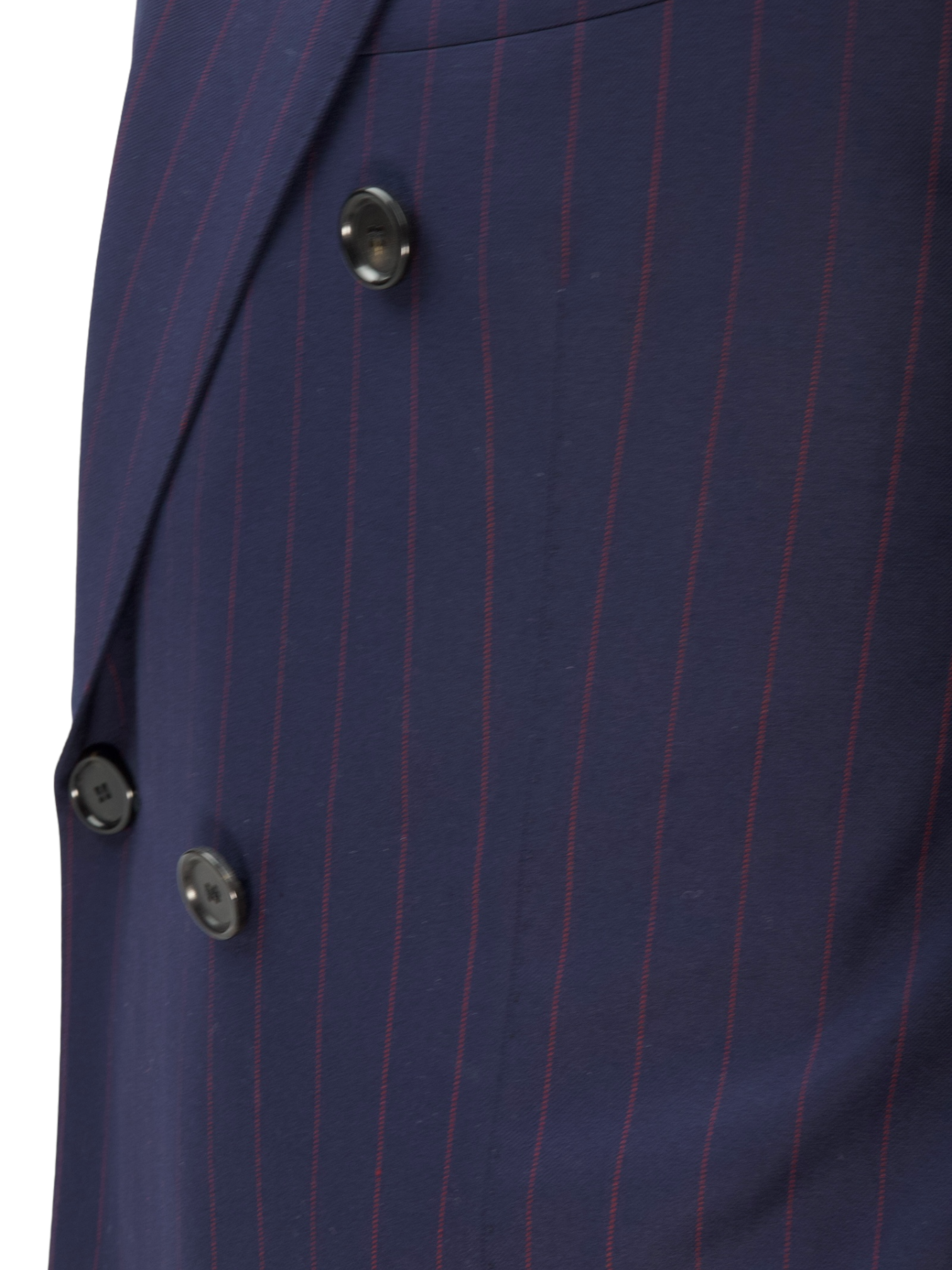
Neapolitan Darts
Neapolitan master tailors add two darts - think of them as pinched seams - to ensure the jacket’s body achieves a slim silhouette. The process, called mezzo punto riprese, is done entirely by hand.
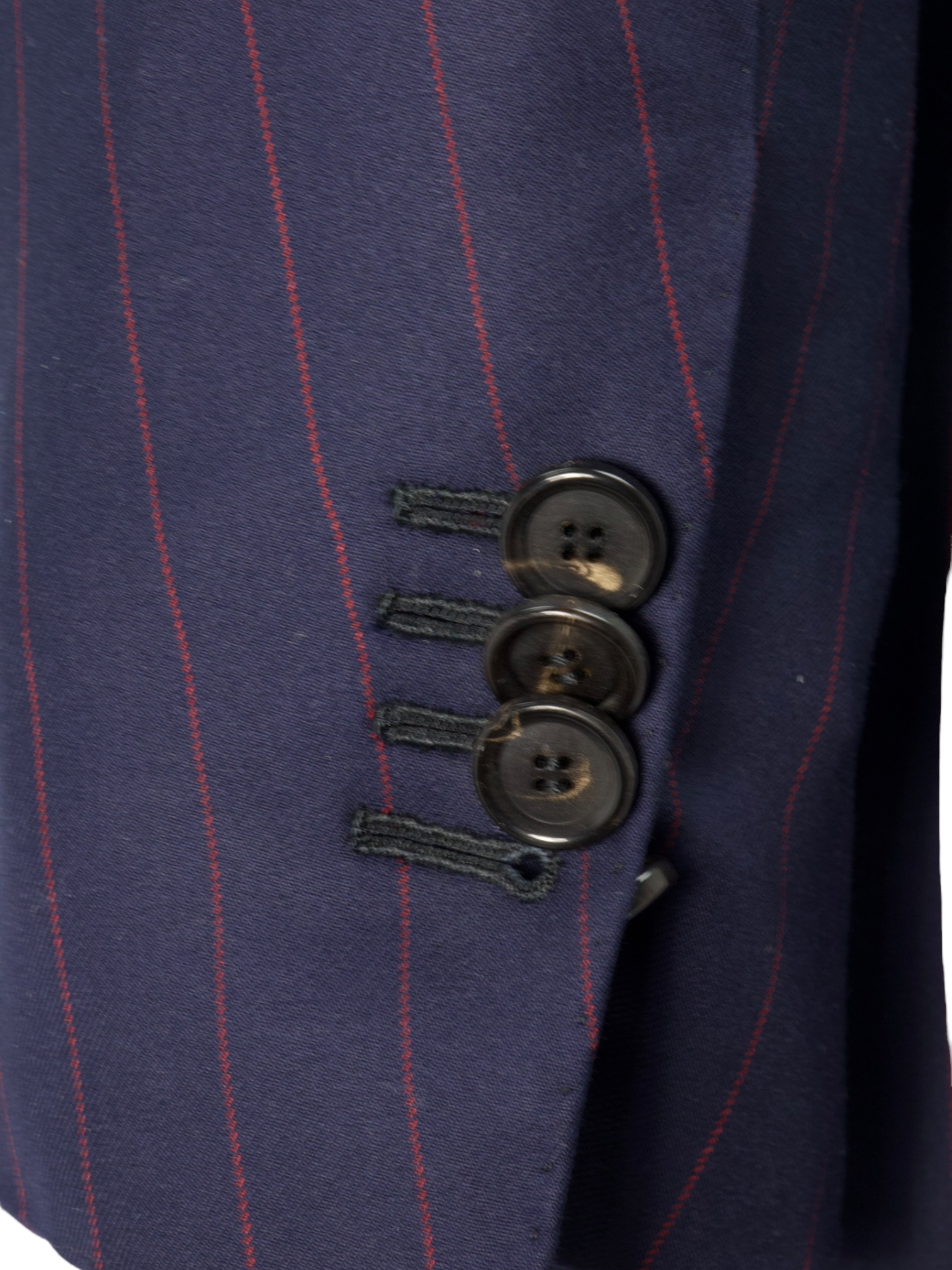
Kissing Buttons and Handmade Buttonholes
Also known as stacked buttons or waterfall buttons, kissing buttons are associated with Italian tailoring as Italian tailors make their jacket sleeve buttons in the kissing style. In this style, buttons touch each other and overlap one another. Handmade buttonholes; Even this step, apparently the simplest, is treated with an abundance of detail. Attaching the buttons is a job that requires patience and must be completed to perfection.
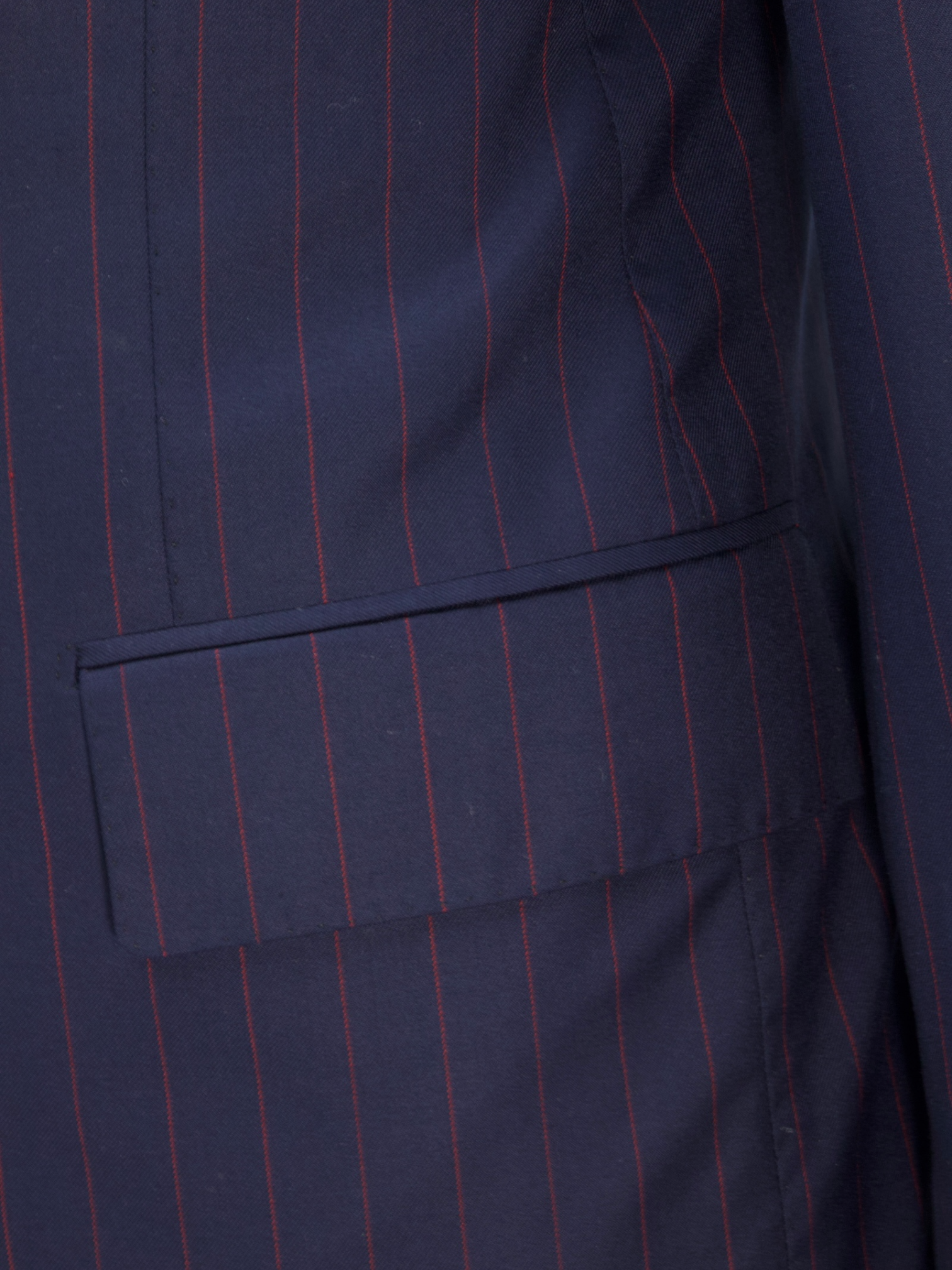
Tasca a Pignata Patch Pocket
Patch pockets, with their rugged functionality, were unsurprisingly adopted by the military for both shirts and jackets. The lower patch pockets on a Neapolitan jacket are modeled after the tasca a pignata style, and when done in its purest form, are easily recognizable with a rounded-bottom and a unique shape
the details of
the trousers
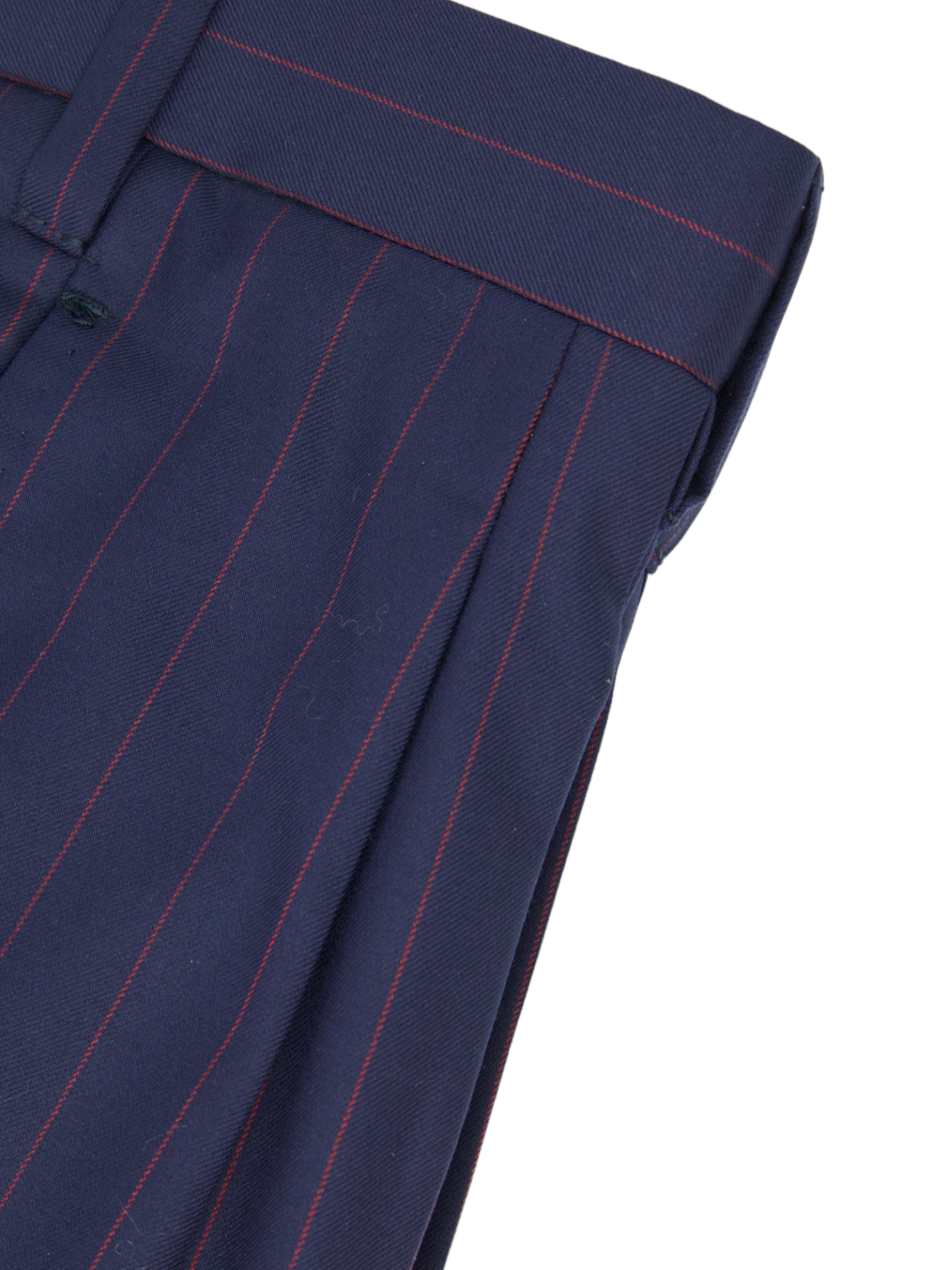
Double Pleated Front
Double-pleat trousers are all about classic elegance. They were a staple in the 1930s and 1940s, an era known for its fuller, more comfortable styles. With two pleats, these pants provide extra room, especially around the hips and thighs, making them great for formal settings. They bring to mind the sophisticated styles of Hollywood icons like Cary Grant, who wore them with effortless charm. Even though slimmer fits have become more popular, double pleats remain appealing for those who appreciate traditional tailoring and timeless style.
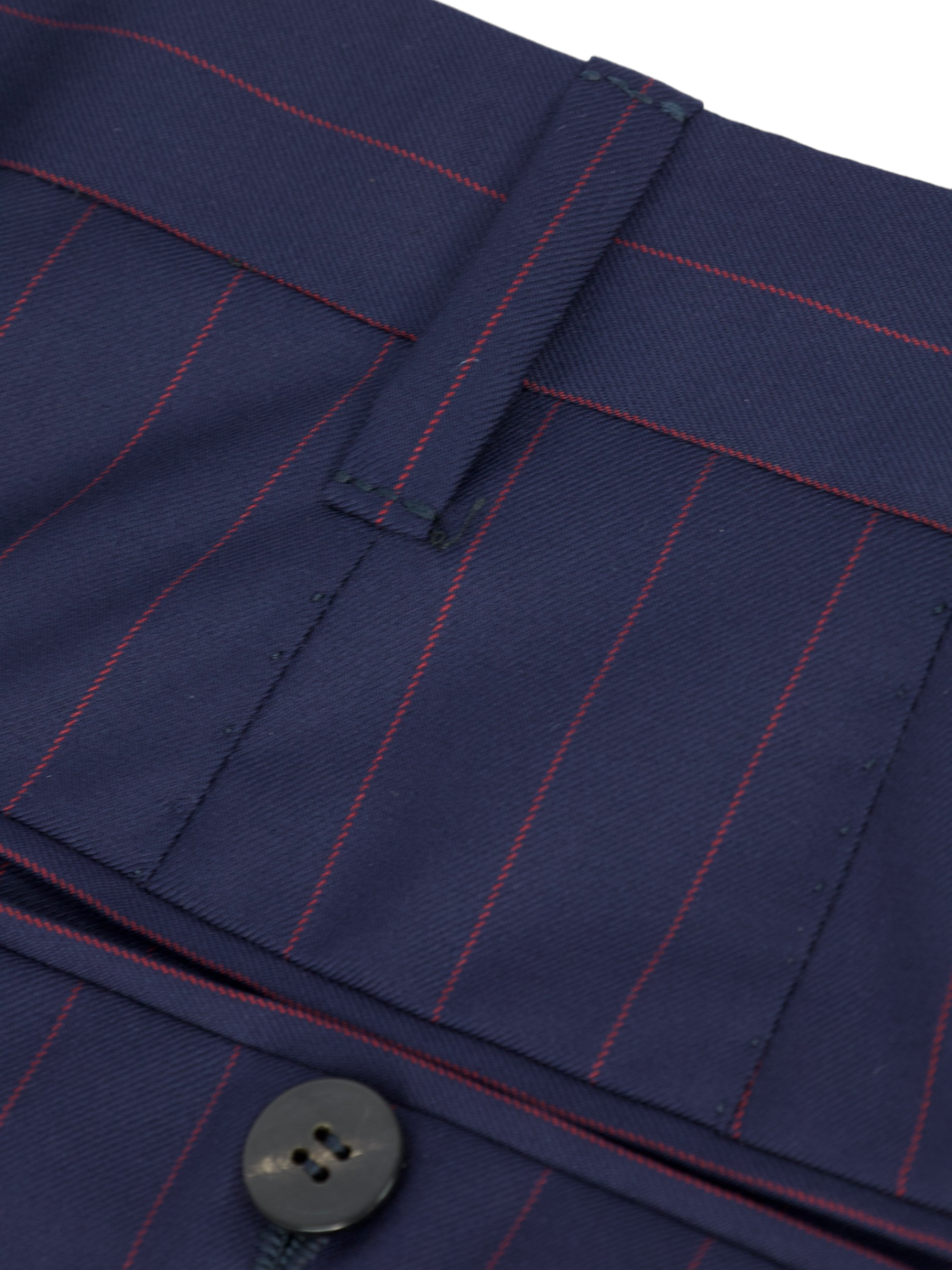
Belt Loops
Belt loops are the most common type of waistband found on trousers, providing the option to wear a belt for both style and practicality. Typically spaced evenly around the waistband, belt loops are a versatile feature that can accommodate a wide range of belt styles and sizes. This traditional waistband design is found in everything from casual jeans to formal dress pants, making it a timeless and adaptable option for any wardrobe. Belt loops offer the flexibility to customize your look while ensuring a secure fit.
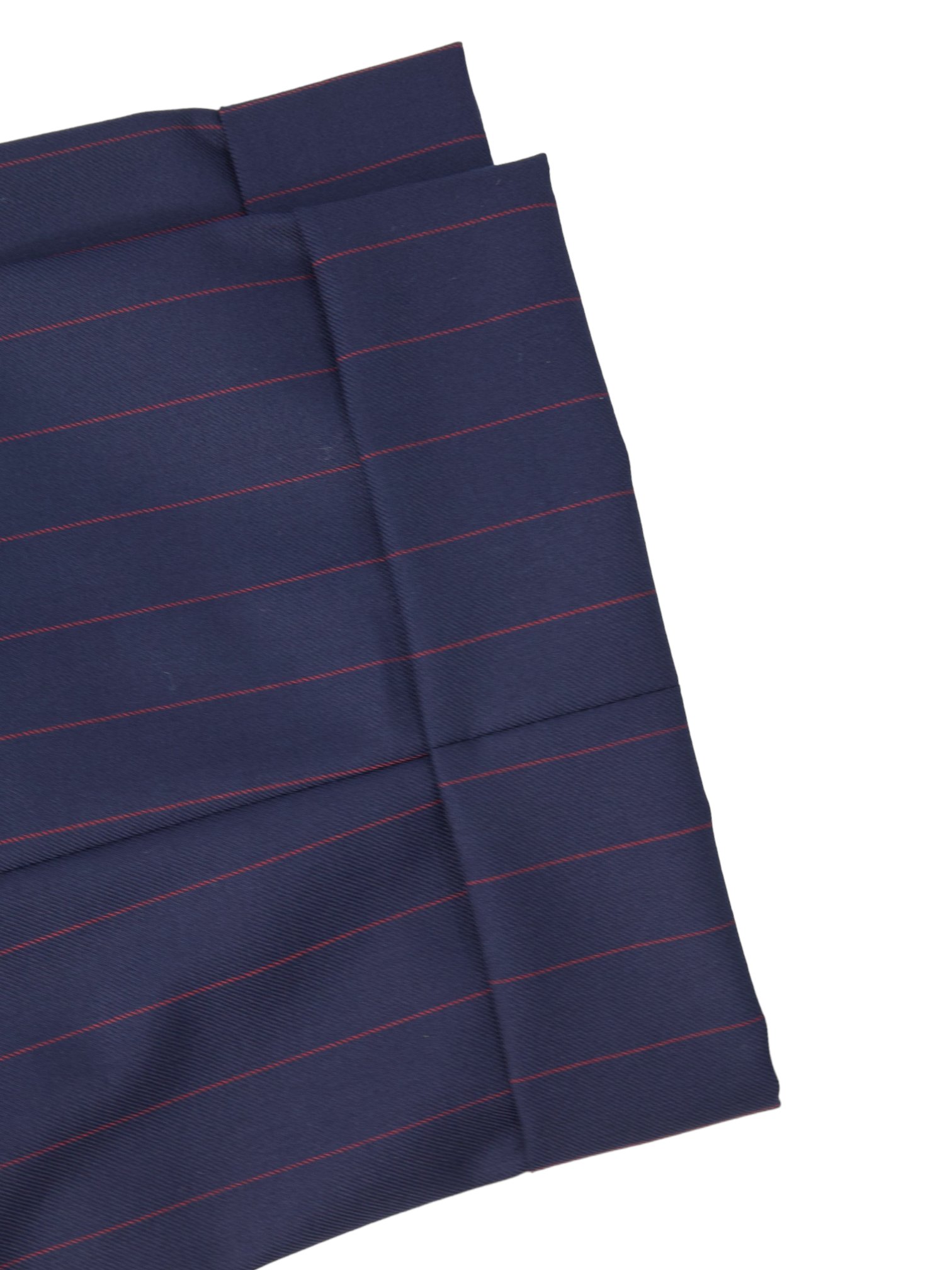
Turn-Up (Cuffed) Hem
The turn-up hem, or cuffed hem, is a classic style where the fabric at the bottom of the trousers is folded outward to create a visible cuff. This style originated with Edward VII in the late 19th century, who had his trousers tailored with cuffs to prevent them from getting muddy, sparking a trend among the fashionable elite. In the 1920s and 1930s, turn-ups became a symbol of wealth and sophistication, as having extra fabric was seen as a luxury. This association continued after World War II when wearing turn-ups subtly indicated affluence in an era of fabric rationing. Today, turn-up hems are a nod to their historical roots, offering a touch of classic elegance and enhancing the overall appearance of formal and tailored trousers.

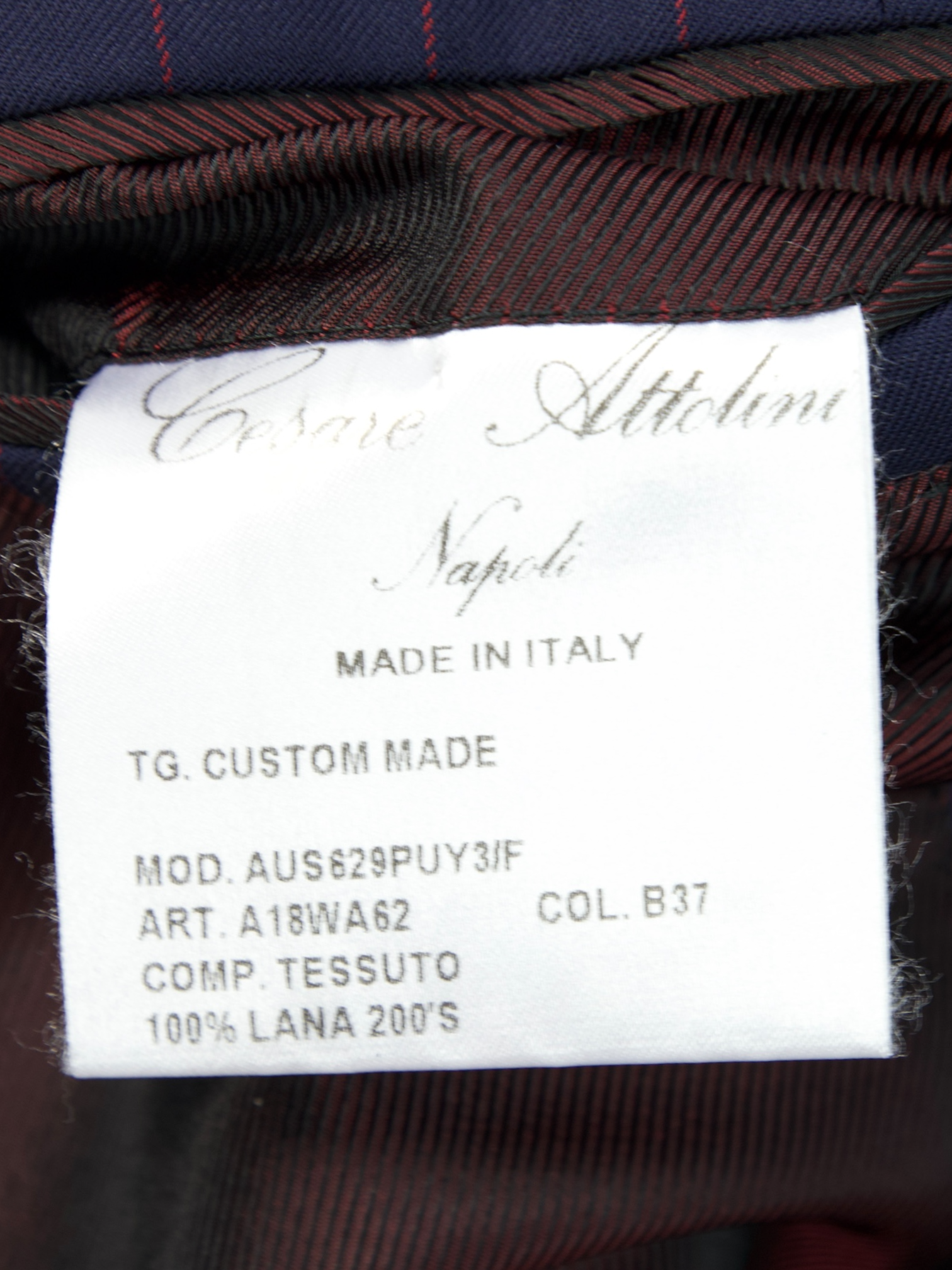
size
46 IT / 36 US / Small


 Curator's Description
Curator's Description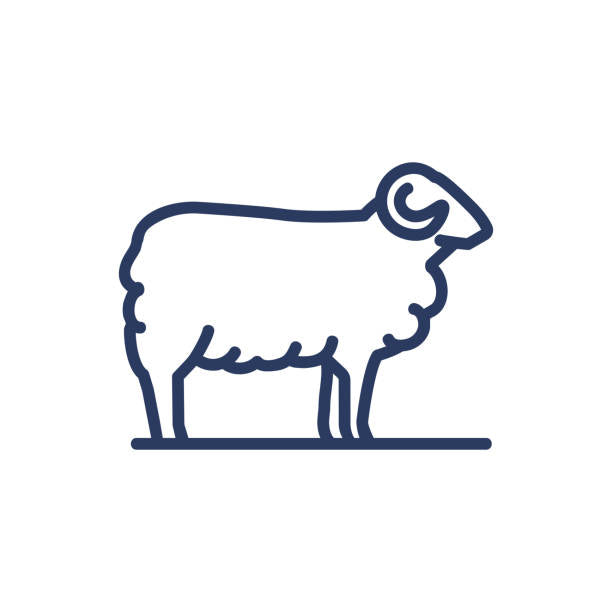 Materials
Materials